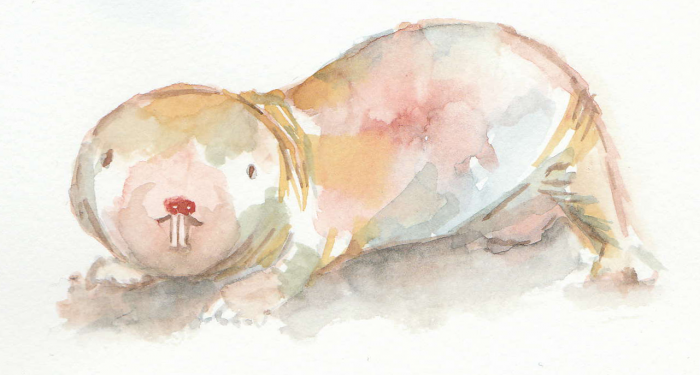Harry Potter fans know that Fawkes the phoenix’s fiery demise wasn’t the end of him; he was simply reborn from the ashes. Phoenixes, of course, are mythical creatures. Immortality in real animals is likely the stuff of fantasy.
Yet, as it turns out, biological immortality only refers to creatures that don’t exhibit signs of aging, and has been observed in animals such as tortoises, sea urchins, clams, and rockfish. Unlike humans and many other animals, these organisms show negligible senescence, or deterioration with age: As age progresses, death rates, reproduction, and survival characteristics like strength and mobility remain largely unchanged.
External forces such as predation, starvation, disease, and unfavourable environmental conditions still prevent animals from living forever. Internal problems that are not a result of aging, like kidney disease, may also cause biologically immortal organisms to die. Whether or not these animals can really live forever is difficult to predict since extremely old specimens are very rare and, in many cases, scientists have to kill an organism to measure its age. Nevertheless, these animals’ efforts warrant some recognition. Below are four creatures that defy aging as we know it.
Greenland shark – Somniosus microcephalus
Also known as ‘sleeper sharks’ for their slow movement, these massive Arctic fish are often blinded by parasites that feed on their eyes. Very little is known about the mysterious species, and our understanding is largely anecdotal. However, they’re believed to be the vertebrate that lives the longest. According to a 2016 study in Science, these apex predators may live for more than 400 years.
Scientists are currently trying to sequence the shark’s genome to discover the secret behind its longevity. Living in cold water certainly helps, since low temperatures slow the metabolism and aging process.
American lobster – Homarus americanus
These bottom-dwelling creatures live in the Atlantic Ocean off the Eastern coast of North America. They feed mainly on fish and molluscs, exhibit indeterminate growth—that in, they never stop growing—and regularly live for more than 50 years. Like other arthropods, lobsters must shed their shells to grow. Unfortunately, as this evidence of their age is literally molted away, it’s difficult for researchers to determine their true age.
Like the Greenland Shark, the American Lobster inhabits cold waters, which contributes to its age defiance by slowing its metabolism. Another explanation lies in its telomeres, the caps that protect the ends of chromosomes during DNA replication. Since telomeres are shortened when chromosomes replicate, longer telomeres correspond to longer life because they protect a greater portion of the chromosome. According to a 1998 study published in FEBS Letters, telomerase—an enzyme that lengthens telomeres—is found in every organ of the American lobster’s body.
Naked mole rat – Heterocephalus glaber
Native to parts of East Africa, naked mole rats are hairless, wrinkled little rodents that live in almost pitch-black burrows. They co-exist in colonies of hundreds of individuals and exhibit a complex social structure similar to that of eusocial insects, in which there is a queen, a few breeding males, and many worker individuals.
These animals also can’t feel most types of pain, almost never get cancer, and are astoundingly tolerant to low-level or poor oxygen conditions. In fact, according to a study in eLife, they are the only known mammal that doesn’t show signs of aging, making them the perfect model for human aging research.
Immortal jellyfish – Turritopsis dohrnii
This tiny jellyfish is probably the closest a real-life creature can get to undergoing a similar transformation to Fawkes the phoenix. Found in the Mediterranean Sea and sometimes in the Atlantic Ocean, they can revert to an earlier stage in their development when threatened. They start life as planulae, or larvae, and eventually assemble with other planulae on the seafloor to create colonies of polyps. Through a form of asexual reproduction known as budding, in which an outgrowth formed from cell division develops into a new organism, medusae—the adult form of jellyfish—break off from the polyps to continue life in a free-swimming state.
When faced with stresses like starvation or injury, the adult jellyfish can revert to its polyp stage, eventually releasing medusae that are genetically identical to the original adult. This process of transforming specialized cells into other types of cells is called transdifferentiation, an important area of study in stem cell research.






